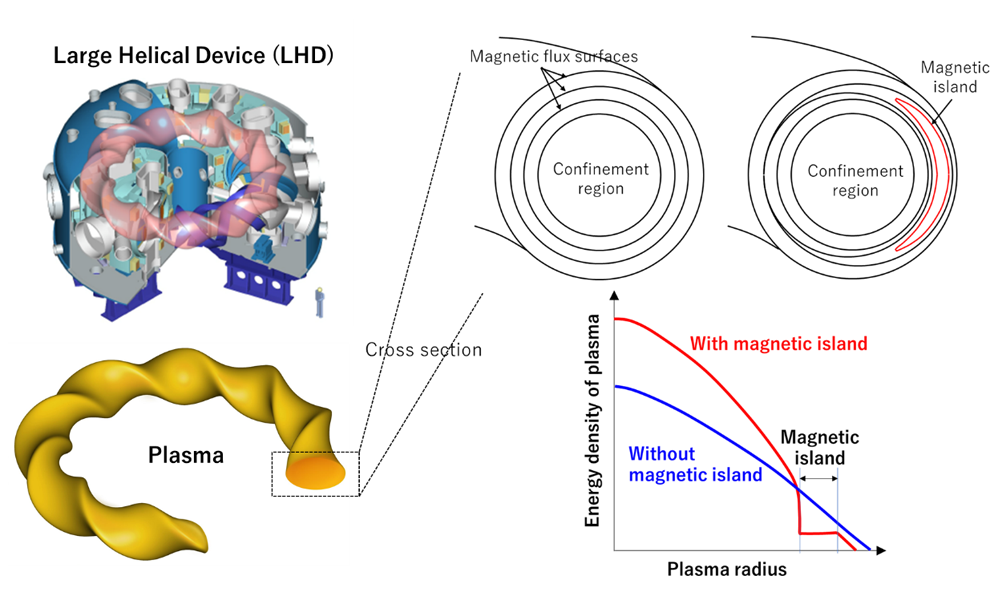Good core plasma performance realized in deuterium plasmas compatible with heat load mitigation at the plasma facing components
In a deuterium plasma experiment in large helical device (LHD), we have succeeded in reducing the excessive heat load on the device wall while maintaining the performance of the confined plasma. It was shown that, in addition to the isotope effects of the deuterium plasma, the magnetic field structure in the peripheral region plays an important role in separating the high-temperature confined plasma from the low-temperature plasma in the peripheral region. These results provide a bright prospect for the operation of mixed deuterium/tritium plasmas in future fusion power reactors.

In fusion reactors it is necessary to generate and maintain as high a temperature as possible in the core confinement plasma, to accelerate the fusion reaction, while the heat flux from the confined plasma can damage or melt the plasma facing wall. The solution to this problem is to make the plasma at the edge as cold as possible, to reduce the heat load on the wall. In many cases, however, the energy of the confined plasma is also reduced simultaneously.
In the Large Helical Device (LHD), we have been working with the aim of solving this problem. One way to do this was to create a magnetic field structure called a "magnetic island" in the peripheral region, as shown in the figure, and to separate the cold edge plasma from the hot plasma in the confinement region. It has been shown that when such a magnetic structure is formed, the plasma in the magnetic island becomes colder and the heat load on the device wall can be reduced.
On the other hand, since future fusion reactors will use deuterium and tritium plasmas to generate electricity, it is necessary to investigate how the plasma changes, depending on the hydrogen isotopes. In this experiment, we have compared the operation of deuterium and hydrogen plasmas using the magnetic field structure described above, the magnetic island. As a result, it was observed, in the deuterium plasmas, that the energy density (pressure = temperature × density) of the confined plasma increased even when the plasma temperature in the peripheral region decreased, as shown in the figure. When this phenomenon occurs, the plasma fluctuation is reduced, and the temperature and density profiles of the plasma at the boundary between the magnetic island and the confined plasma increase rapidly. This phenomenon was not observed in hydrogen plasmas, and was first observed in deuterium plasmas. This result indicates that deuterium plasmas can achieve higher performance confined plasmas than hydrogen plasmas, while reducing the heat load on the plasma facing wall.
The results show that future deuterium and tritium plasmas may be able to reduce the heat load on the device wall while maintaining higher plasma performance.
This work was carried out by a research group led by Masahiro Kobayashi, Ryosuke Seki and Yuki Hayashi at the National Institute for Fusion Science, in collaboration with Toshiki Kinoshita at Kyushu University.
The results of this research were published on December 14, 2021 in Nuclear Fusion, a journal on controlled thermonuclear fusion by the International Atomic Energy Agency.
